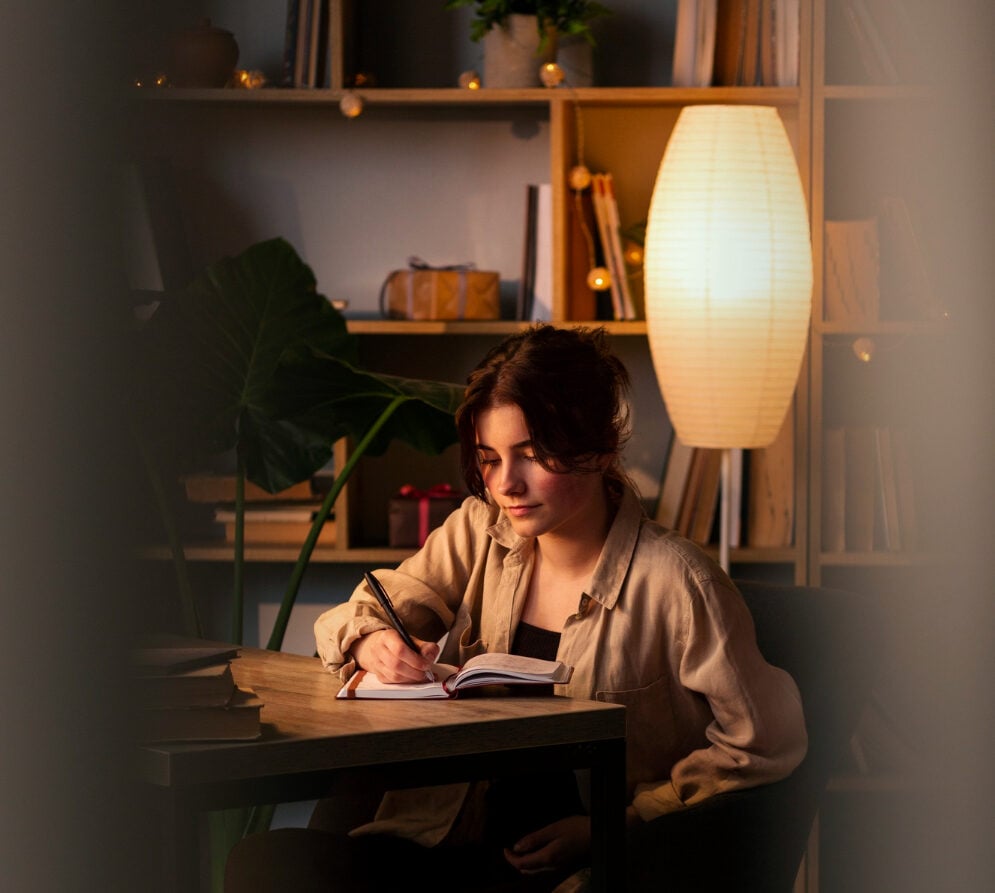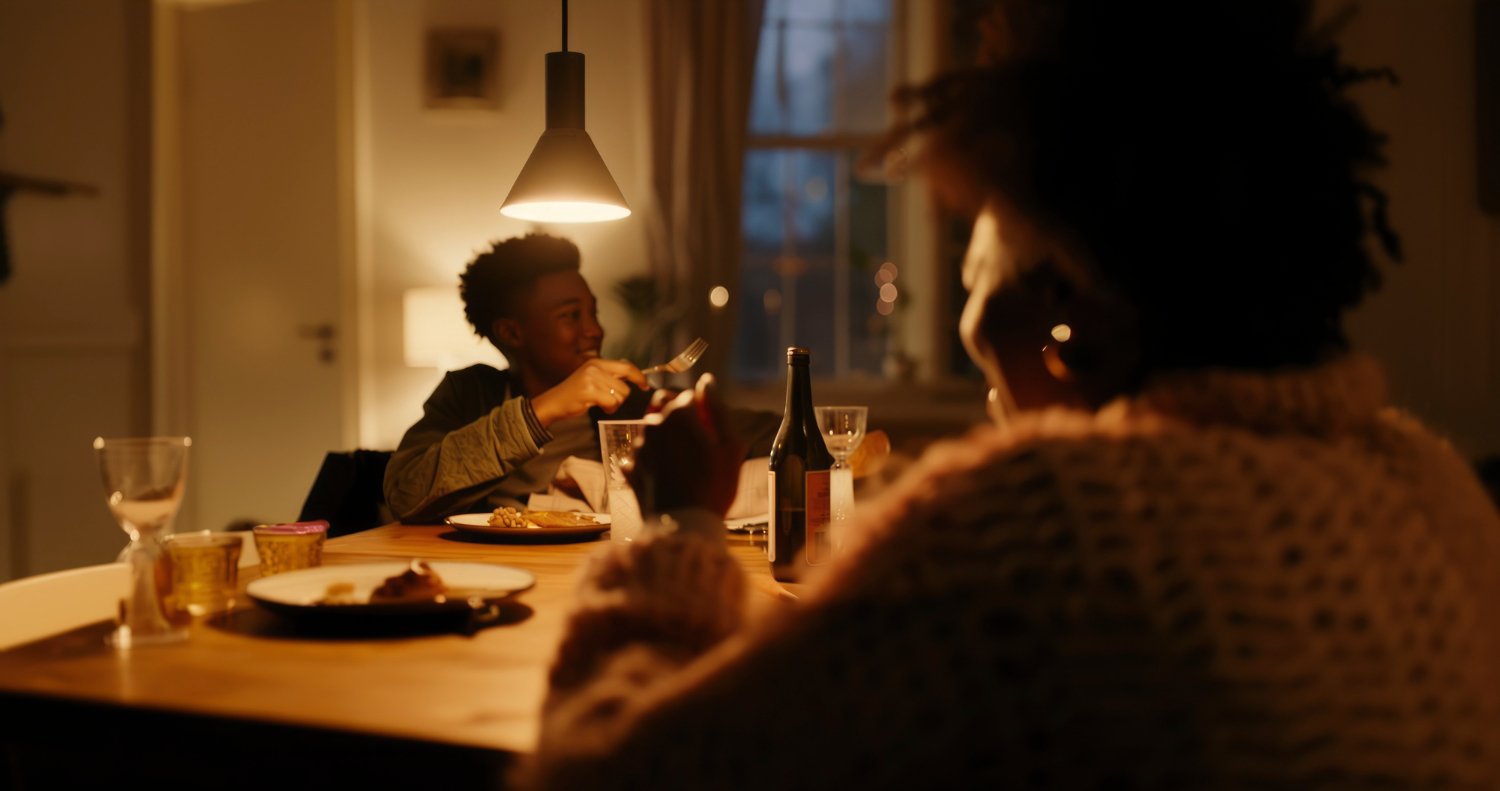Creating Cozy Ambience with Layered Lighting

By Ivana Nady, Zen Interiors
As the seasons shift and evenings draw in earlier, many of us start noticing how much our home environment influences the mood. A room that feels bright and energising in summer can suddenly feel dull and flat in winter. But there is no need to buy new furniture or undergo major renovations, to change it. The easiest way to bring the warmth back is with something far simpler: layered lighting.
Lighting is often overlooked and seen as purely functional, flip a switch, and the room is lit. But in truth, lighting does so much more. It sets the tone of family life, quietly shaping the mood at home. The glow that makes a dinner feel homey, the bright beam that helps a child focus on homework, or the soft bedside lamp that signals bedtime, are the subtle cues that support daily rhythms and family harmony.
The Three Layers of Light
1. Ambient Lighting: the foundation
This is the main source of light in a room, usually a ceiling fixture, pendant, or recessed downlights. Ambient lighting ensures you can navigate the space, but on its own it often feels flat or even clinical. Imagine only having the overhead light on in the living room, it gets the job done, but it hardly makes you want to curl up with a book.
2. Task Lighting: for focus and clarity
Task lighting is more concentrated and purposeful. Desk lamps for studying, under-cabinet lighting for chopping vegetables, or a reading lamp beside a favourite armchair fall into this category. In family homes, task lighting is a quiet hero, it prevents eye strain during homework, creates safer work zones in the kitchen, and allows a teenager to read in bed without disturbing younger siblings.
3. Accent Lighting: the mood-setter
Accent lighting adds depth, softness, and character. Think of the glow from a floor lamp in the corner, the flicker of light from a colourful lamp bought on the local market in Turkey, or the sparkle of fairy lights strung across a child’s play nook. These touches turn a house into a home, inviting people to relax and connect. Without them, a room can feel impersonal; with them, it becomes layered, textured, and alive.
Why Layering Matters
The beauty of layering lies in the ability to shift the atmosphere depending on the moment. Bright and practical in the morning, focused and functional during the day, and finally soft and cocooning at night. A layered approach allows your home to move with the rhythm of your family.
Research[1] shows that lighting directly affects our circadian rhythm, mood, and energy levels. Harsh, cold light late in the evening can signal the brain to stay alert, making it harder for children (and adults) to wind down. Warm, dimmed light, on the other hand, tells the body it’s safe to relax and encourages the release of melatonin.
Simple Tips
- Install dimmers. They’re an inexpensive way to adjust brightness for different activities and moods, bright for playtime, low for bedtime.
- Mix bulb temperatures. Use cooler, brighter lights in study and kitchen areas, and warmer tones in living and sleeping spaces. This creates natural zoning without walls.
- Think portable. Rechargeable (solar) table lamps or lanterns are perfect for children who love creating blanket forts or need a nightlight.
- Add layers gradually. Start with one or two extra lamps or string lights and notice the difference. You don’t need to overhaul everything at once.
- Use candles (real or LED). They instantly add intimacy to dinners or quiet evenings, with or without the flame.
Small Shift, Big Impact
When you walk into a space, you shouldn’t feel like you walked into a classroom, you should feel warm and cozy. Often the difference lies not in the colour of the walls or the style of the furniture, but in the light.
By combining ambient, task, and accent lighting, you give your family the gift of atmosphere, spaces that support energy when it’s needed, and calm when it’s time to unwind. Especially in the busy rhythm of family life.
[1] Effects of light on human circadian rhythms, sleep and mood (Blume et al., 2019) Blume Et Al., 2019 – Effects of Light On Human Circadian Rhythms, Sleep and Mood | PDF | Circadian Rhythm | Sleep

